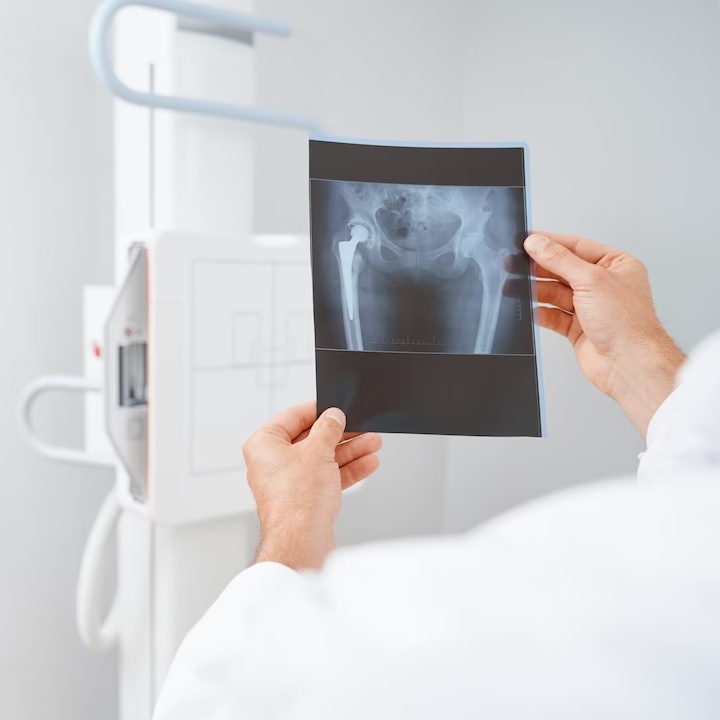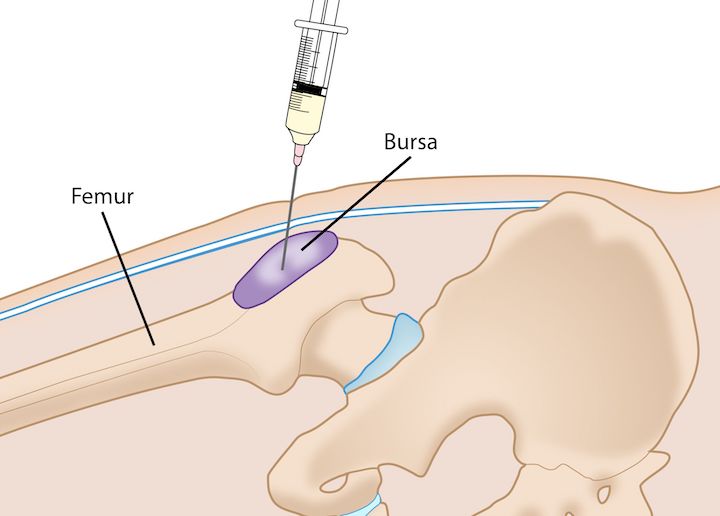Are you feeling pain in your hip or thigh? You may be experiencing trochanteric bursitis, a common condition that causes inflammation of the bursa near the greater trochanter. This can lead to pain and discomfort when you move your leg, walk, sleep, and even stand.
Let’s discuss the causes of trochanteric bursitis, its symptoms, its diagnosis, and different treatment options. We’ll also talk about ways to prevent it from occurring and how to manage the pain if it does happen.
With proper diagnosis and treatment, you can get relief from this painful condition so you can go back to doing all the activities you used to enjoy.
Trochanteric bursitis is caused by inflammation of the trochanteric bursa, a fluid-filled sac that cushions the bones and lubricates the joint.
Exercises for prevention, lifestyle modifications, stretching techniques, physiotherapy, and diet changes are all ways to help reduce symptoms. Physical activity can also help manage the discomfort associated with this condition.
You can reduce pain caused by the condition with proper treatment and diligent care.
Many people don’t realize that overuse, physical trauma, arthritis, and inflammatory conditions are some of the most common causes of lateral hip pain. These factors can all lead to trochanteric bursitis, an inflammation of the bursa located at the tip of the greater trochanter. It is thus also referred to as greater trochanteric pain syndrome (GTPS).

Photo Credit: Freepik
Resting properly, doing physical therapy, and stretching exercises can often reduce symptoms. Anti-inflammatory medications and icing regularly may also be prescribed to reduce pain and swelling. Taking these measures can help manage and prevent this condition from getting worse.
Pain and tenderness around the hip often indicate something wrong has happened and may indicate bursitis of the hip. Other symptoms include limping and difficulty sleeping on the affected side. There may also be pain when standing for long periods or walking up stairs, increased pain with activities such as running or jumping, swelling of the hip area, and a feeling of grinding in the joint.
Risk factors for this condition include Patellar Tendinopathy or other tendon issues around the knee, poor posture or alignment of the legs and hips during weight-bearing activities, diet changes to increase inflammation in the body, and lack of exercise. Strategies to help manage symptoms include exercise modifications, physiotherapy, and diet changes to reduce inflammation.
Diagnosing this condition typically involves examining the area, taking a medical history, and potentially ordering imaging such as an X-ray or MRI. For advanced diagnosis, diagnostic accuracy is improved with alternative tests like:
Diagnostic strategies must be tailored to each individual patient’s needs, and clinical decision-making based on symptoms and exam findings is important for accurate diagnosis of hip bursitis.
Imaging can provide a clearer understanding of your condition, so it’s important to discuss with your doctor what imaging tests are right for you.

Photo Credit: Serhii Bobyk, Freepik
Ultrasound imaging is often used to diagnose trochanteric bursitis as it provides images of the soft tissues and helps detect any fluid buildup or inflammation.
An MRI may also be used to show detailed images of the muscles and tendons surrounding the affected area. X-ray imaging can also be used to check for bone spurs or other abnormalities in the area. Your doctor may also recommend CT scans and arthroscopy imaging if further evaluation is needed.
Lab tests can be used as an additional tool to help diagnose the underlying cause of trochanteric bursitis. Blood tests, physical exams, lifestyle modifications, and rest periods are important to consider when evaluating a patient with this condition. Steroid injections may also be prescribed if needed.
To get an accurate diagnosis, your doctor will use lab tests in combination with other methods such as imaging tests and manual palpation of the hip area. It’s important to have a full evaluation to ensure that treatment is tailored specifically for you.
Non-surgical treatments for pain in the trochanteric bursa can include rest, physiotherapy, and lifestyle modifications to help reduce pain and swelling. These can include:
If conservative treatments are unsuccessful, surgical treatment may be necessary to reduce pain and discomfort in your hip area. Steroid injections, platelet-rich plasma (PRP) therapy, arthroscopic surgery, open surgery, and ultrasound therapy are the most commonly used procedures for treating trochanteric bursitis.

Photo Credit: American Academy of Orthopedic Surgeons, OrthoInfo
Depending on your condition, one or more of these techniques may be employed to provide relief from symptoms. Arthroscopic surgery is a minimally invasive procedure where a small incision is made in the skin over the affected area, and an arthroscope is inserted to view the joint. Open surgery is considered when a more extensive repair is needed or if there is severe damage to the joint structures.
Ultrasound therapy helps improve blood circulation and reduce inflammation in tendons and ligaments. PRP injection delivers concentrated growth factors into damaged areas of tissue to promote healing.
Now that you know about surgical treatments for trochanteric bursitis, let’s talk about how to prevent it in the first place:
Managing the pain and symptoms associated with this condition involves implementing various lifestyle modifications. Stretching exercises, ice therapy, and physical therapy can help reduce inflammation and improve mobility.
Lifestyle changes such as avoiding activities that cause pain, resting, and using anti-inflammatory medications like ibuprofen or naproxen sodium may also be beneficial. Regular stretching is a key part of managing trochanteric bursitis successfully.
Ice therapy should be applied for 10-15 minutes at a time to reduce swelling and discomfort in the area. Physiotherapy may also be recommended to help strengthen muscles around the joint affected by the condition.
Trochanteric bursitis is primarily caused by repetitive stress or overuse of the hip joint, leading to the bursa to become inflamed. It can also be caused by direct injury to the hip, prolonged pressure on the bursa, or conditions such as arthritis or spinal abnormalities.
Yes, with appropriate treatment, the bursitis symptoms can often be effectively managed and may go away completely. This typically involves a combination of rest, physiotherapy, and pain management strategies.
Walking is not necessarily bad for the condition and can actually be part of the recovery process. However, avoiding overdoing it and listening to your body is important. If walking exacerbates the pain, reducing the intensity or duration of walks may be helpful.
Trochanteric bursitis is a condition characterized by the inflammation of the bursa located near the greater trochanter, which is the bony prominence on the side of the hip.
Trochanteric bursitis can be caused by repetitive motion or direct trauma to the hip, such as from running, cycling, or falling. It can also occur as a result of underlying conditions like arthritis or overuse of the hip muscles.
The most common symptom of trochanteric bursitis is pain on the lateral side of the hip. The pain may worsen with activities that involve hip movement, such as walking, climbing stairs, or lying on the affected side.
To diagnose bursitis, a healthcare provider will perform a physical examination and review the patient’s medical history. Imaging tests, such as X-rays or MRI scans, may be ordered to rule out other possible causes of hip pain.
Treatment of trochanteric bursitis typically involves a combination of rest, physical therapy, and medication. Non-steroidal anti-inflammatory drugs (NSAIDs) may be prescribed to reduce inflammation and relieve pain. In some cases, corticosteroid injections or surgical intervention may be necessary.
Yes, trochanteric bursitis can recur, especially if the underlying causes, such as excessive hip movement or overuse, are not addressed. It is important to follow a comprehensive treatment plan and make necessary lifestyle modifications to prevent recurrence.
Although rare, trochanteric bursitis can lead to septic bursitis if the bursa becomes infected. Symptoms of septic bursitis include increased pain, swelling, redness, warmth, and fever. Prompt medical attention is necessary if septic bursitis is suspected.